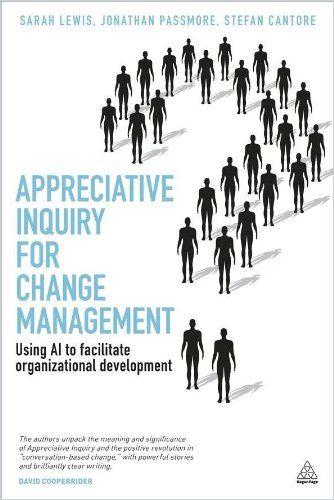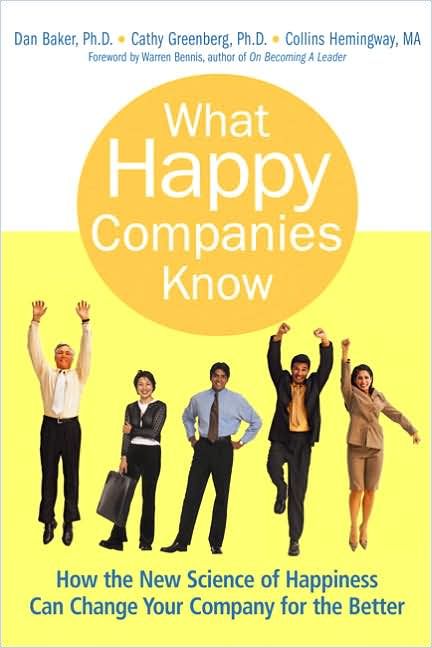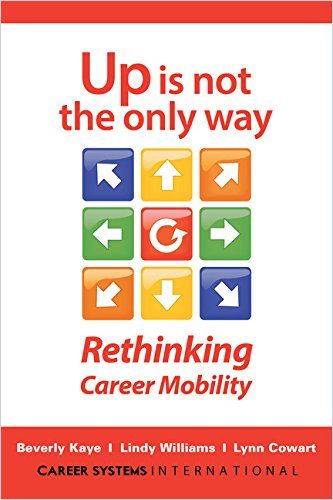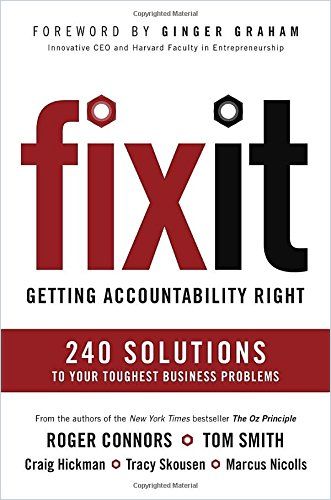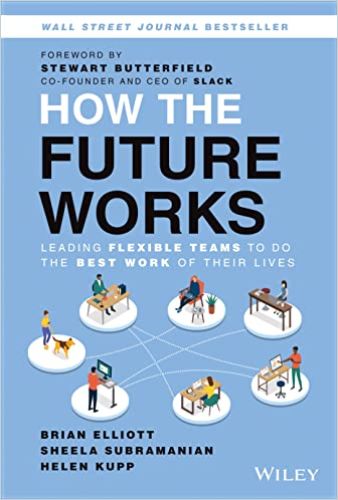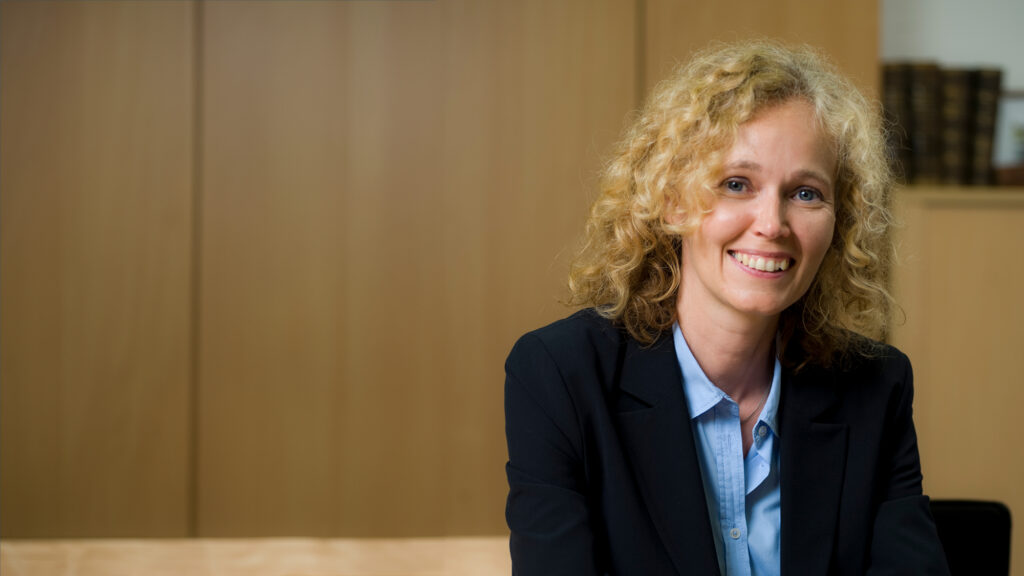How to Ventilate Hybrid Setups

We all learned that hybrid collaboration can be productive if it’s well-structured and centered on problem-solving. Keeping meetings short, respecting others’ focus times and relying on defined communication channels for specific types of collaboration makes us all more productive.
However, what often gets lost in the daily cascade of well-prepared, tiny groups and always micro-problem-oriented meetings is an open exchange, different perspectives on more significant problems – and a shared view of the big picture.
In this article, we present some techniques on how to break out – and how to improve talent mobility, curiosity and the innovative power of entire organizations on the way.
Getting Started
Before you set out to get the creative inter-team juices flowing (and channel them again, making change happen), make sure that all your endeavors are aligned with the shared company goals, align with the values of your company culture, and that your colleagues feel safe enough to contribute.
An essential factor in all further steps is the appropriate mindset of the people involved: In 2023, hardly any other need of our corporate customers increased as much as content support for “critical thinking.” For good reason: We may have all become efficient cogs in the hybrid organizational gears – but we also risk limiting ourselves to mere task execution because “that’s the way things finally work.”
Yet, tech philosopher Tom Chatfield encourages organizations to question their status quos for the better:
Aim to practice constructive doubt by taking a lively, curious interest in how knowledge can be acquired within a particular field – and how this knowledge can be tested and improved.
Tom Chatfield
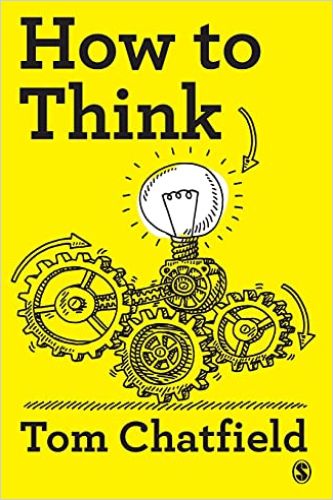
Here is what you can do to raise the agility bar with comparative effortlessness through better communication.
1. Cross-Functional Learning and Collaboration
“There certainly is a challenge in creating the necessary space for fostering cross-departmental learning and collaboration in hybrid and remote settings,” says Antonia McGrane, responsible for People & Culture at getAbstract. “Amid our day-to-day tasks, it’s natural to become absorbed and lose sight of the broader team. This makes it essential to facilitate connections outside of routine meetings.”
To do so, encourage regular, cross-functional brainstorming or ideation sessions that involve team members from different departments and locations.
This promotes a culture of open communication and collaboration. You will find the basics in the following articles:
Depending on whether broader or particular topics are to be discussed in your targeted objectives, it is advantageous to define a purpose or a meaning for the discussions. The purpose may be the exchange itself, and it could be about shared interests or input seeking. Defining it determines which of the following forum examples are suitable.
The list is certainly not exhaustive, and hybrid models consisting of several example scenarios are also conceivable.
a) Project Days & ERGs
The software company Atlassian is known for its “ShipIt Days,” a specific form of project days where employees are encouraged to work on projects outside their usual responsibilities. Those projects may deal with something as “simple” and analog as changing the bulbs in the office to achieve a more comfortable light, or it may be the virtual discussion of a whole new business case. It could even be, “Jonathon makes awesome homebrew and wants to share it” at specific Better Brew gatherings after work. Either way:
Open forums foster cross-functional collaboration and creative thinking.
The same applies to the increasingly popular Employee Resource Groups (ERGs). These are voluntary, employee-led groups aiming to foster a diverse, inclusive workplace aligned with the organizations they serve. As Great Place to Work explains, they are “usually led and participated in by employees who share a characteristic, whether it’s gender, ethnicity, religious affiliation, lifestyle, or interest” – but they do not have to share a physical office in their day-to-day to do so. They exist to support and help “in personal or career development and create a safe space where employees can bring their whole selves to the table.” Learn more about the concept and how HR can help bring it to life here.
b) Hybrid Book Clubs
“We’ve found book clubs a powerful tool to leverage learning and connection in hybrid setups,” says Antonia McGrane from getAbstract’s People & Culture. “Staying true to our roots, participants come together to discuss a carefully selected summary from our extensive library of over 26k+ summaries.”
Consequently, book clubs offer an opportunity for employees to step away from the routine and engage in enriching conversations with their peers. By bringing together individuals from different departments, locations and projects, hybrid book clubs encourage participants to think critically and differently, allowing for increased innovative thinking and a more empathetic workforce.
In addition to the positive impact on engagement and connection, this approach also proves to be cost-effective, making it a valuable investment in breaking down silos and encouraging cross-departmental interaction.
Antonia McGrane
c) Virtual Connectivity Events
“In 2022, we hosted our first virtual Year-End Event, celebrating our combined achievements as a global team and enjoying a shared moment for reflection,” Antonia explains. “Individuals were asked to set aside their work responsibilities for some time and enjoy a relaxed and enjoyable setting.”
It was imperative to Antonia and her team that individuals from different departments and locations had the opportunity to contribute to the event, resulting in four engaging global sessions condensed into a single hour.
“One of the highlights was a captivating check-in question posed by two of our Customer Success Managers, which fostered lively discussions and helped break the ice. Additionally, a cross-departmental duo organized a quirky personality test for all participants. This activity brought a sense of fun and playfulness to the event, further strengthening the bonds within our team.” Beforehand, getAbstract employees from all continents and departments were asked to collect their very own efficiency hacks, and their presentation of valuable insights and practical tips to enhance productivity served as inspiration for change.
“Finally, one of getAbstract’s senior managing editors delighted the attendees by reading out a poem she had written, cleverly using summary titles to captivate our attention. The feedback from the event was overwhelmingly positive,” says Antonia. “And I believe it is down to acknowledging the immense talent that exists within a company.”
It’s a powerful thing to facilitate connection amongst a geographically distributed team. The sense of connection that emerges from this type of event extends beyond the immediate moment: It enhances effective team work, understanding and empathy in the long run.
Antonia McGrane
2. Unconferences for Knowledge Exchange
Google has been known to host “Google Tech Talks,” where employees and industry experts share knowledge on various topics. This informal setting encourages open discussions and knowledge exchange, and publicizing the format got many companies, who perhaps have less big problems to discuss than the tech giant, thinking: Can’t we organize something like this? Yes, you can.
Imagine them as the younger sibs of Appreciative Inquiry. “A ‘whole-system-in-the-room’ way to bring the company to life on the inside, to spark massive transformation while energizing people and partners,” as David Cooperrider, professor at Case Western Reserve University, puts it. The format allows for an organic flow of information and promotes knowledge exchange across departments, enabling participants to drive discussions based on their interests and expertise, even if the room is virtual.
a) How to Unconference
To dismantle silos between departments that intensified with increased remote work, Sonja Kuhn, one of getAbstract’s top project managers, read Open Space Technology by Harrison Owen, the inventor of the Open Space concept.
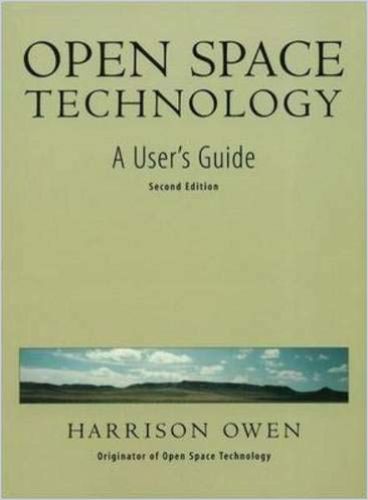
Eager to be an unconference host for our yearly getAbstract company kickoff, she attended one in Zurich’s Impact Hub on “Sustainable Business Models.” Initially unsure if she could contribute to a topic distant from her expertise, she was surprised at what she gained:
The day felt like uncovering a treasure in a hunt, revealing how a conference should function – effortless, powerful, imaginative, and tailored to individual needs, beneficial both personally and content-wise.
Sonja Kuhn
The experience turned out to be aligned well with getAbstract’s culture. Yet, Sonja had some reservations before her premiere: “I didn’t want to leave topic generation until the event day, as this format drastically differed from our previous ones. So I opted for a ‘Curated Unconference,’ where ‘Topic Owners’ submitted their topics in advance.”
This approach helped her understand how many subjects (18! – from “Improving On- and Offboarding at getAbstract” to “What would the world miss if there were no getAbstract?” or “The future of payment”) the staff would develop and find the necessary space to discuss them. Sonja explains that the Topic Owners, those who came up with an idea to discuss, also received an introduction to the unconferences beforehand, outlining what makes a good session and host. The outcome?
A gathering of 130 people, highly engaged in collaborative solution-seeking.
Sonja Kuhn
The results, Sonja says, were what she and all participants had hoped for. “There was no room for a silo mentality, and how we collectively thought had a lasting impact. Many referred to the Unconference as the highlight of the four-day event.”
Feedback from the Topic Owners (requested four months later) indicated that most projects were significantly advanced thanks to the unconference, resulting, for example, in a revamped onboarding experience. Next year, Sonja says, she will go for the uncurated format: “Having had this experience, I trust the employees will bring up their topics without the preparation!”
Who an unconference is for:
- People who believe in collaboration and innovation.
- Individuals seeking new paths.
- Those who are experimental.
- Those who enjoy listening, learning, and contributing.
Who an unconference isn’t for:
- Traditionalists who prefer conventional conferences.
- People who like to maintain control over content at all times.
- Those who dislike preparation – an unconference without structured preparation can become chaotic (even though the laws and guidelines are straightforward).
Even though unconferences work better in a physical gathering, understanding the basics of unconferencing puts people who aim to tap into their colleagues’ full potential into a position where they can leverage their facilitation skills in nearly every hybrid or virtual meeting.
If you plan to facilitate a totally remote unconference (and are looking for tech solutions to do so), here’s some helpful advice, examples from Meltwater nad QiQoChat and best practices from SimCorp.
3. Looking Over the Fence
What was part of the unconference and the cross-functional initiatives can also be encouraged and institutionalized in everyday working life: The temporary rotation of positions or the opportunity to gain experience in other departments. There are several ways to do this, depending on how far your organization wants to go with it:
a) Rotational Ambassadors
Adrian Imboden, one of getAbstract’s IT specialists, explains how just one day of exchanging teams to gather a rich impression of another department’s workflows can have a lasting impact:
As IT specialists, we ensure that our editors can do their work efficiently, quickly, and reliably with the tools we provide. However, this is often easier said than done, and the bi-monthly inter-team sessions with our writing and editing colleagues only give a fraction of the information that we sometimes need to solve a problem for them.
Adrian Imboden
Everyone has probably heard the saying, “A picture paints a thousand words.” Adrian had a similar experience when he sat next to Koni Gebistorf from getAbstract’s Editorial an entire morning: He spent the hours just looking over the executive editor’s shoulders to understand exactly how he works and what problems he encounters. “I quickly realized that many challenges with our internal admin area never come up. Many useful customizations are never requested because they look complex but, in fact, are not. Koni used many functions differently than people in development thought – and think – when trying to improve workflows.
That morning, Adrian finally understood what the editorial team does all day – and could thus deliver solutions to some weathered problems within hours. Hence, Adrian’s latest motto is:
One day as an assistant is worth a thousand meetings.
To gain and utilize these insights company-wide, each department should ensure that its members can gain experience in and with other departments in addition to their daily work. To get started, develop a program that assigns employees as ambassadors to different departments on a rotational basis. These ambassadors act as liaisons, fostering communication between teams and providing insights into each department’s processes and challenges. This approach helps build relationships and breaks down communication barriers.
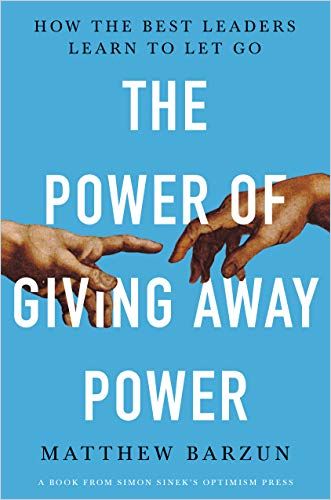
An annual plan in which team members rotate, possibly monthly, as an ambassador or assistant for a certain number of hours in other departments to learn about workflows and problem solutions very quickly ensures a better exchange of information and understanding throughout the company.
b) Job Shadowing and Interdepartmental Leadership Development
If you are looking for solutions that go beyond the ambassador roles, try facilitating opportunities for employees to engage in learning experiences outside their typical roles. This could include
- job-shadowing programs,
- cross-functional training and innovation sessions,
- or knowledge-sharing workshops.
By exposing team members to different aspects of the organization, you break down silos and cultivate a more holistic understanding of the company’s operations.
General Electric (GE) went several steps further by implementing several leadership development programs that rotate high-potential employees through different business units. This strategy helps individuals gain a comprehensive view of the organization and promotes collaboration, and in a slimmed-down version, the principle can be applied when onboarding new people – without any management training background.
At getAbstract, a Young Leaders Learning Circle was launched in 2023, which gives leaders who have only recently taken on team responsibility two hours once a month to talk about their current challenges in a virtual meeting.
The aim is to discuss currently relevant leadership topics (the agenda is put together based on anonymous topic requests from the participants), to get a feel for the scope of these topics, and to find solutions to problems in the field together. The approach is two-pronged: on the one hand, there is indeed an agenda, but open discussions are used to find out exactly where the challenges lie in the area being discussed, and only after a detailed check-in. In the second step, solutions can be presented by others, for example, by compiling getAbstract learning resources around a specific question that’s been discussed. If this approach is not suitable, for example, for very complex topics, the team proceeds the other way round with the help of the manager and first compiles the content that is needed for understanding – to then talk about the topic or play through case studies.
In any case, there should always be enough space for discussions and related insights to “emerge” without anything having to be forced. The Chatham House Rule, meaning anyone who comes to a meeting is free to use information from the discussion but is not allowed to reveal who made any particular comment, applies in the Young Leaders Learning Circle – and it should apply in each and every open discussion forum relying on trust and honest insights.
c) Role-Switching & Inter-Team Learning
After seven years of working in various roles in getAbstract’s Editorial team, Heather Hodel felt she had learned all she could at that level. She understood what the company and her department did, but sometimes, she didn’t understand why.
So, Heather started to think about where else she could go within the company.
“Two elements of my personality drew me to the Sales team,” she explains. “First, I’m naturally a very curious person. In childhood, I always tried to learn as much as possible about whatever topic was my flavor of the month – UFOs, the stock market, spontaneous combustion, Australia, UFOs in Australia. I had eclectic tastes.”
Second, she realized she is “a chronic multitasker, jumping from one topic to the next enough to get everything done by the end of the day. Some people say you shouldn’t do that. For me, it’s the only way I know how to function, and I dare say I’m rather good at it. Give me one task to finish by the end of the day and I’ll put it off to tomorrow; give me five tasks and I’ll have six done by 5 p.m.”
The role of a Customer Success Manager (CSM) was a natural fit for Heather. A good CSM must, first and foremost, be curious about their clients. They have to ask the right questions and be genuinely interested in the answers given. Then, CSMs have to convert these insights into meaningful actions. “As a CSM, I learned so much every day. My head was often spinning by the evening. The product I’d spent the last seven years helping to build suddenly made sense. It made me so proud of the work the Editorial team does. I could see our summaries really help people daily.”
Heather realized that her colleagues got a lot right in the Editorial team, but she also saw that some of the assumptions she and others held about the product and users were off base or even baseless.
This is what I now understand is a natural effect of creating a product while having limited contact with the end users.
Heather Hodel
After a year of being a CSM, she was offered the opportunity to lead the Editorial team. Heather jumped at the chance: Her task would be to combine the excellent work the team already does with new client perspectives. “This doesn’t have to be hard,” Heather explains. “To begin, I first wanted to show the team all the love and praise clients have for their work. Luckily, I had a great opportunity to invite a client, one who was a huge fan, to meet the Editorial team. She told them all the wonderful ways their summaries had helped people at her company and took the time to answer lots of questions.”
Then, Heather gave them a tour of the customer portals and showed them the statistics tools and screenshots of usage examples. “It’s not rocket science; you just need to help people connect the dots. People want to know if their work matters. When you show them it does, they naturally start asking more questions. People’s minds open to new ideas.”
Feeling valued is a funny thing, it makes you want to do an even better job.
Heather Hodel
The challenge now is to keep the positive momentum up, says Heather. Finding ways to regularly connect users to her team is a never-ending task – but also a rewarding one: “I find it easiest to do if you focus on the element of curiosity, rather than trying to force learnings on people. Keep it fun, keep it light. Little shots of inspiration, here and there, make all the difference.”
Although not all companies offer the opportunities that Heather had, it is worthwhile to spend more extended periods of time in other teams from time to time and delve deeper into the subject matter there – to return to the old team after a certain period of time and pass on these insights there.
Other forms of the idea behind this are:
- Regularly invite people from other teams to (virtual) meetings to allow them to explain their ecosystem, the circumstances, and the “laws” there. If these meetings are even prepared, for example, by collecting questions for the visiting person beforehand and then discussing them, a better overview and more understanding for others can be achieved.
- Inter-team meetings exist in the vast majority of companies. However, these mandatory meetings are often very dull and fruitless. Therefore, ensure there is enough free space in the meetings so that you don’t just work through a pre-prepared agenda. Ask for success stories from both sides, leave room for personal messages, and ensure that it’s not always just the usual suspects who shine with speeches.
- Initiate joint time-outs or activities between different teams where possible. Of course, when the word “team building” is mentioned, many people think primarily of their own team. But wouldn’t it be exciting to invite other teams and coordinate the activities? It is often enough to offer participation to get certain people interested. Plus, team insights get around faster and more casually during such analog or virtual time-outs than in fully scheduled meetings.
Read more about agile employee development models, inter-team and career-switching experiences:
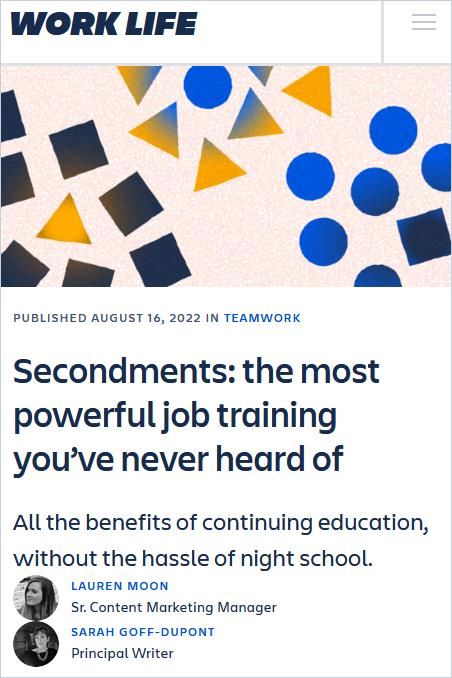
Secondments: the most powerful job training you’ve never heard of
Atlassian Read Summary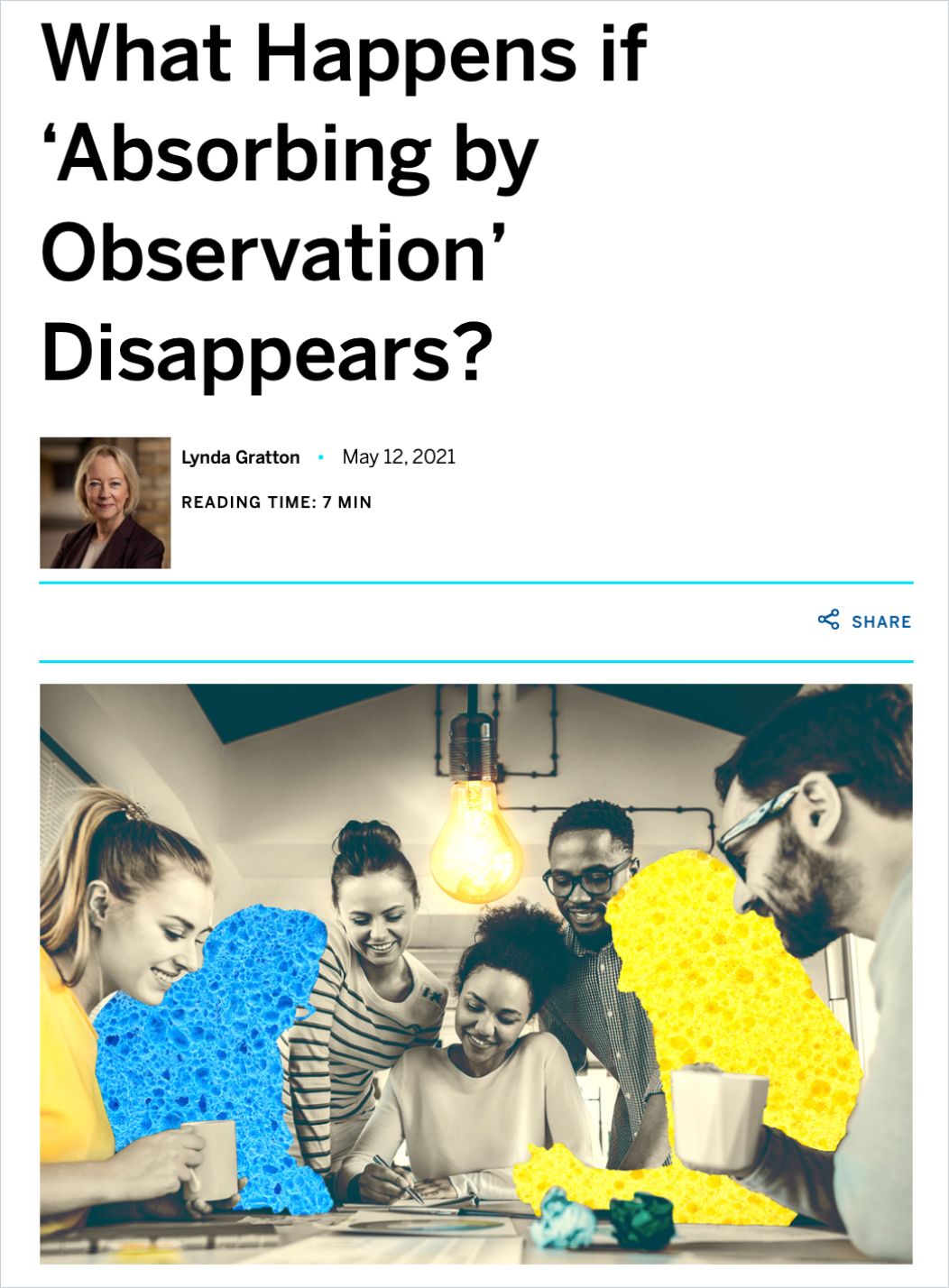
What Happens if ‘Absorbing by Observation’ Disappears?
MIT Sloan Management Review Read Summary4. Utilize Technology for Transparent Communication
Buffer, a social media management platform, is known for its commitment to transparency within the company. They use tools like Slack and Trello for real-time communication and project management, making information accessible to all employees. So, no matter which open communication rooms you choose for your exchanges, it is imperative that the results of the discussions, if they are to lead to concrete change, are recorded transparently and supplemented with any follow-up communications. These can be lists of findings or presentations, acknowledgments of implemented initiatives, or follow-up project outlines.
To make sure that the results are transparent and visible so that they do not disappear into the twilight between existing silos, implement collaborative tools and platforms that facilitate easy-to-follow communication across the organization early on.
Encourage the use of shared documents, project management tools, and communication channels that allow real-time updates and information sharing. This reduces the reliance on exclusive meetings for disseminating critical information. Here, you’ll find advice on how to find the right tools by asking the right questions beforehand:
